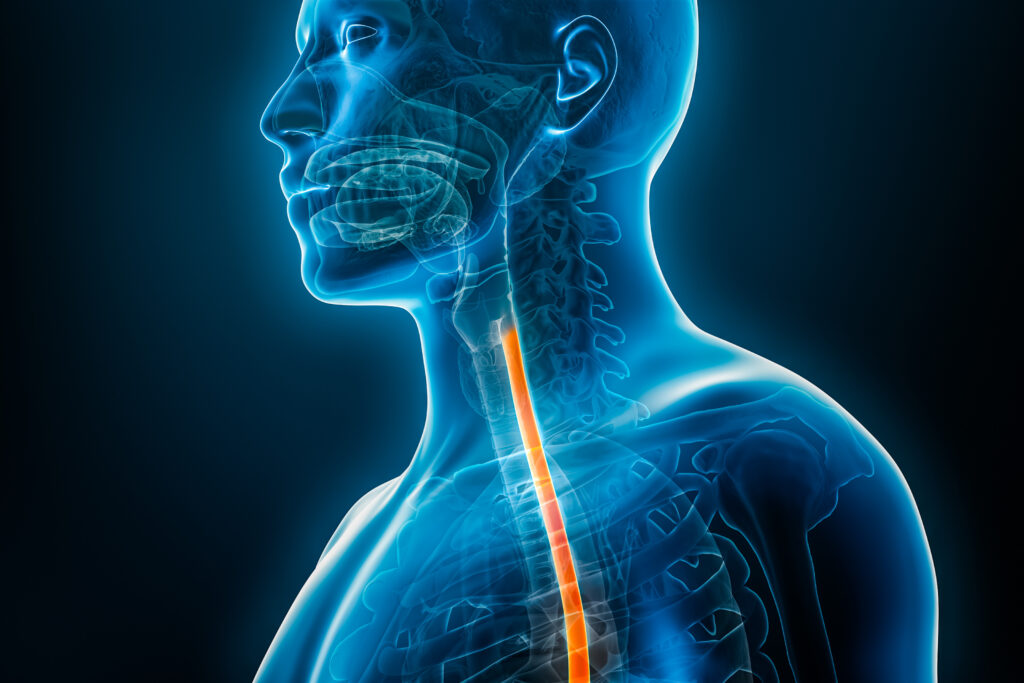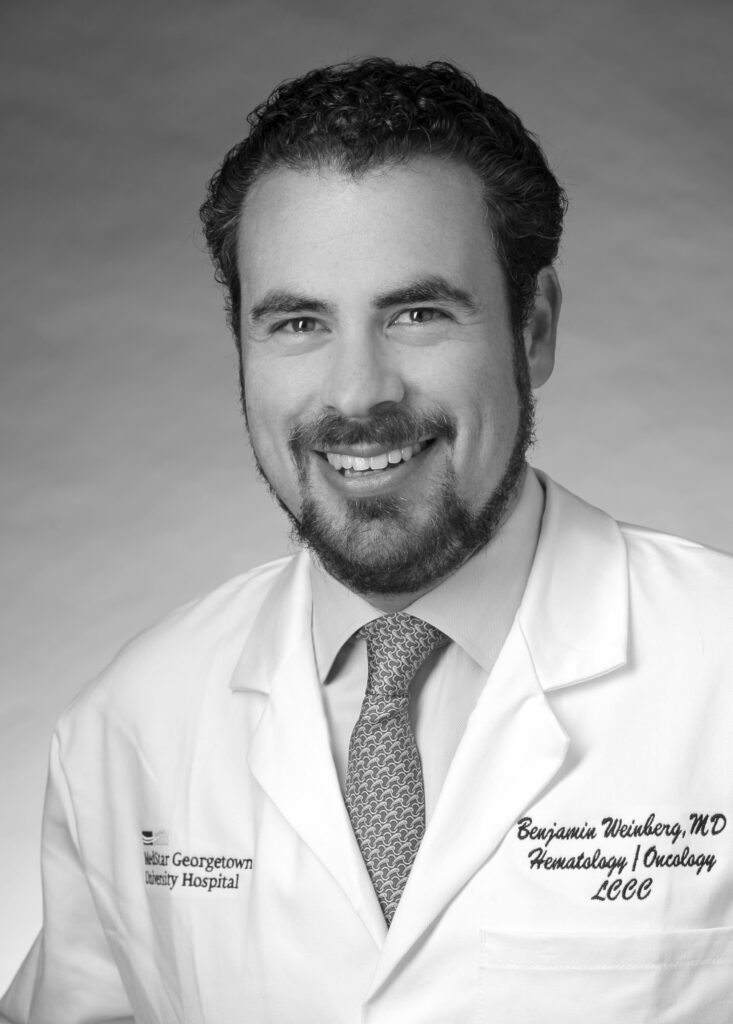Primary liver cancer represents about 6 % of all new cancer cases worldwide and is the third leading cause of cancer-related death after lung and gastric cancers.1 Hepatocellular carcinoma (HCC) accounts for 85–90 % of all primary liver malignancies and is the most common primary liver malignancy in adults.2 While, in Western Europe and North America, HCC is responsible for less than 5 % of all cancer deaths, it accounts for over a third of all cancer deaths in developing countries. China alone sees more than 55 % of all HCC cases worldwide.3
Primary liver cancer represents about 6 % of all new cancer cases worldwide and is the third leading cause of cancer-related death after lung and gastric cancers.1 Hepatocellular carcinoma (HCC) accounts for 85–90 % of all primary liver malignancies and is the most common primary liver malignancy in adults.2 While, in Western Europe and North America, HCC is responsible for less than 5 % of all cancer deaths, it accounts for over a third of all cancer deaths in developing countries. China alone sees more than 55 % of all HCC cases worldwide.3
In the US, HCC is a growing problem. The HCC age-adjusted incidence rate has doubled in recent decades as a consequence of a cohort effect related to infection with hepatitis B and C.4 Worldwide, hepatitis B and C account for 80–90 % of all HCC cases.3 Other risk factors for HCC include excessive alcohol consumption, smoking, non-alcoholic steatohepatitis, autoimmune hepatitis, primary biliary cirrhosis, exposure to environmental carcinogens (particularly aflatoxin B) and the presence of various genetic metabolic diseases (such as, for example, hereditary haemochromatosis, tyrosinaemia and α-1-antitrypsin deficiency).5–7 Given the diversity of the aetiologic factors implicated in the development of HCC, the complexity of hepatocyte function, and the late stage at which the disease is usually diagnosed, it is not surprising that HCC is a highly heterogeneous tumour with often a poor prognosis.8
Unfortunately, because of the asymptomatic nature of early HCC, up to 80 % of patients present with unresectable HCC.9 The overall survival (OS) rates for advanced disease are only 3–5 %.10 While surgery (resection and transplantation) and percutaneous ablation (radiofrequency ablation [RFA] and percutaneous ethanol ablation) can achieve long-term control in selected patients with early HCC, recurrence rates are as high as 50 % at three years.11 Historically, even with treatments such as transarterial chemoembolisation (TACE), intra-arterial or systemic chemotherapy, radiotherapy, immunotherapy or hormonal therapy, the 5-year relative survival rate for patients with HCC is only 7 %.12
Until recently, systemic agents, including hormonal and cytotoxic agents (alone and in combination) have had no significant therapeutic success in HCC studies.13 Several reasons for this have been put forward. Tumour biology dictates poor chemosensitivity, which is frequently mediated by the expression of drug resistance genes. Overexpression of drug efflux pumps such as P-glycoprotein and multidrug resistance protein increases the cellular outflow of cytotoxic agents. In addition, the presence of hepatic dysfunction, which contributes to the development of most HCCs (>80 %), may hinder the delivery of drug therapy. Cirrhosis not only impairs drug metabolism, but also affects the synthesis of plasma-binding proteins that influence the serum proportion of active drug. Additionally, the fluid overload that occurs with cirrhosis can alter drug distribution volumes.
Given the need for alternative options, molecularly targeted agents are being developed as systemic therapies for HCC. These new drugs are being developed in both first-line and second-line settings, as monotherapy and in combinations, and in combination with loco-regional therapies for early stage disease. This concise review considers the evolving molecular targets identified in HCC and the ongoing clinical evaluation of the novel agents being developed to disrupt them.
Hepatocarcinogenesis and Potential Targets for Therapy
The pathogenesis of HCC (hepatocarcinogenesis) is a complex and dynamic process that interplays between two main pathogenic mechanisms: cirrhosis associated with hepatic regeneration after tissue damage, and malignancy associated with mutations occurring in single or multiple oncogenes or tumour suppressor genes.5 In 70–90 % of patients, HCC develops in the background of chronic liver disease and inflammation that result in repetitive oxidative stress, cell proliferation, necrosis, DNA damage and genomic alterations.10,14 The development of new agents for HCC therefore requires consideration of these co-morbid conditions, particularly because agents with efficacy against malignant growth may not provide favourable effects on underlying progressive cirrhosis.15 Meanwhile, the molecular heterogeneity in pathways that underlie hepatocarcinogenesis may affect the success of therapeutic interventions.16
A number of molecular pathways have emerged as promising targets in HCC. Most notably, angiogenesis has been identified as an important contributor to HCC pathogenesis. The vascular endothelial growth factor (VEGF) and its family of receptors (VEGFRs) have been shown to be upregulated in HCC tumours at the level of gene expression and at the plasma protein level in patients with HCC compared with patients with cirrhosis.17,18 Elevation of VEGF and VEGFR in HCC promotes angiogenesis – leading to the development of new tumour blood vessels, tumour growth and metastasis – and has an implication for disease prognosis.19–23 Fibroblast growth factor (FGF) and its family of receptors (FGFRs) are also potent inducers of angiogenesis in HCC and have been shown to synergistically augment VEGF-mediated HCC development and angiogenesis.24 FGF may also modulate resistance to VEGF/VEGFR inhibition, such that aberrant activation of FGFRs has been shown to drive hepatocarcinogenesis.25–27
Other potential molecular targets in HCC include peptide growth factors and their receptors, including the epidermal growth factor (EGF) and its family of receptors (EGFRs), the hepatocyte growth factor (HGF) and its receptor (HGFR/c-Met) and the insulin-like growth factor (IGF) and its receptor (IGFR). Although all have been implicated in HCC and provide a possible link to hepatocarcinogenesis, most clinical studies to date in biomarker unselected patients have been disappointing and others are ongoing.28–34 Finally, a number of intracellular targets have also been implicated in HCC. These include the phosphoinositide 3-kinase (PI3K) pathway and mammalian target of rapamycin (mTOR), the Ras/Raf/mitogen-activated protein kinase pathway, MEK1/2, survivin and src. The above results across studies reflect the molecular heterogeneity of HCC. Ultimately, to realise the full potential of the new agents, identifying predictive markers for response will be critical. As we have learned from other malignancies, identifying patients with target addiction (and not just expression) will help select patients most likely to benefit from the new interventions.
Sorafenib
Sorafenib, an oral multikinase inhibitor, is currently the only approved systemic therapy in HCC. Preclinical studies have suggested that the antitumour activity of sorafenib in HCC may be attributed primarily to the inhibition of tumour angiogenesis by targeting VEGFR and platelet-derived growth factor receptor (PDGFR), and also possibly to a direct antiproliferative, pro-apoptotic effect on tumour cell survival via interruption of Raf kinase signalling.35,36 Two pivotal phase III, randomised, placebo-controlled trials have proven the efficacy of sorafenib in HCC.37,38
In the Sorafenib HCC assessment randomized protocol (SHARP) study,37 602 patients with advanced HCC who had not received previous systemic treatment were randomly assigned to receive either sorafenib (at a dosage of 400 mg orally twice daily) or placebo. The median OS was reported at 10.7 months with sorafenib versus 7.9 months with placebo (hazard ratio 0.69 [95% confidence interval (CI) 0.55–0.87]; p<0.001). There was no significant difference between the two groups in the median time to symptom progression (4.1 months with sorafenib versus 4.9 months with placebo; p=0.77), a coprimary endpoint for the study. Median time to radiologic progression was longer with sorafenib (5.5 versus 2.8 months; p<0.001). A similar study was conducted in Asia with 226 patients randomly assigned in a 2:1 ratio to either the sorafenib group (n=150) or to the placebo group (n=76).38 Again, median OS was prolonged with sorafenib (6.5 versus 4.2 months; hazard ratio 0.68 [95 % CI 0.5–0.93]; p=0.014), and median time to progression was longer with sorafenib than placebo (2.8 versus 1.4 months; hazard ratio 0.57 [95 % CI 0.42–0.79]; p=0.0005).
In comparison, both studies included patients with compensated liver disease (Child-Pugh A) and provided evidence that systemic agents can affect the natural course of HCC when the competing risk of underlying cirrhosis is minimised. Furthermore, sorafenib demonstrated a predictable and manageable side-effect profile most commonly including fatigue, diarrhoea, weight loss, hand-foot skin reaction, anorexia, nausea and hypophosphataemia. In contrast to the SHARP study, patients in the Asia study were younger, had poorer performance status, had tumours with more vascular involvement and extrahepatic spread, and the majority were infected with hepatitis B (75 % and 7 % of patients in the Asia study versus only 19 % and 28 % of patients in the SHARP study had hepatitis B and C as the underlying aetiology, respectively). Nevertheless, a survival benefit of similar magnitude was seen despite lower values for OS in both the treatment and control groups (6.5 versus 4.2 months, respectively) and time to progression (2.8 versus 1.4 months, respectively). These results reinforce the heterogeneity of HCC due in part to the various aetiologic factors and geographical/regional management, and further highlight the effect of tumour and clinical heterogeneity on the reproducibility of results with the same agent between studies.
Since the SHARP and Asia studies, additional clinical trials and retrospective studies39–41 continue to demonstrate the efficacy of sorafenib for the treatment of HCC. However, the effect of sorafenib in patients with less compensated liver disease (Child-Pugh B and C) remains to be seen. In practice, this remains an important question because the majority of patients with advanced HCC have either Child-Pugh B or C cirrhosis. Since sorafenib is primarily metabolised in the liver by cytochrome P450 metabolism and glucuronidation, studies in patients with declining hepatic function are also needed.42
In addition, ongoing studies will determine the safety and efficacy of sorafenib in combination with TACE (SPACE study, national clinical trial [NCT] 00855218), after RFA and resection (STORM study, NCT00692770) and after transplantation.43
Beyond Sorafenib
Selected targeted agents currently being evaluated in HCC are listed in Table 1. Before the approval of sorafenib, several agents with various mechanisms of action were evaluated in HCC in the front-line setting with mixed results. The majority of these studies were single-arm phase II designs. These single-arm studies are difficult to interpret in comparison with the SHARP data because they did not control for the extent (‘stage’) of liver disease. An overview of many of the phase II and III proof-of-concept studies of targeted therapies in HCC is given in Table 2. Because of the demonstrated efficacy and recent approval of sorafenib, the future landscape for randomised phase II and III studies will be based on head-to-head comparisons with sorafenib.
Single Agents
Sunitinib
Sunitinib is a small molecule tyrosine kinase inhibitor that inhibits several receptors, including VEGFR, PDGFR, c-Kit, Flt-3 and RET. It has been previously approved for the treatment of gastrointestinal stromal tumours after progression or intolerance to imatinib mesylate and for the treatment of advanced or metastatic kidney cancer.44,45 Common grade 3 or 4 toxicities of sunitinib include thrombocytopenia, neutropenia, neurological symptoms, fatigue and haemorrhages.46
Several small phase II studies suggested that sunitinib may have therapeutic efficacy in patients with advanced HCC.46–48 However, toxicity varied with the dosing schemes in each study, with a death reported in the 50 mg group, four weeks on, two weeks off schedule.46 Recently, a phase III study evaluating a continuous dosing schedule of sunitinib versus sorafenib in the front-line setting for HCC was halted early (NCT00699374). Data recently presented at the American Society of Clinical Oncology Annual Meeting49 demonstrated a median overall survival for sorafenib of 10.2 months, compared with 7.9 months for sunitinib. In addition, there was more haematologic toxicity and bleeding events with sunitnib. These unfortunate results highlight the need for randomised phase II studies of new agents in HCC.
Brivanib
Brivanib is a dual inhibitor of VEGFRs and FGFRs that has shown antitumour activity in preclinical HCC models.50 A phase II study of single-agent brivanib as first-line and second-line therapy also showed promising efficacy in HCC. In a largely Asian population of 55 patients with advanced HCC, first-line treatment with brivanib was associated with a median time to progression of 2.8 months (95 % CI 1.4–3.9), with a disease control rate of 60 % (47 evaluable patients) and a median OS of 10 months.51 Meanwhile, in 46 patients with HCC that was primary refractory to sorafenib (63 %) or refractory to sorafenib after initial benefit (35 %), second-line treatment with brivanib was associated with a disease control rate of 46 % (37 evaluable patients), a median investigator-assessed time to progression of 2.7 months, and a median OS of 9.8 months.52 Brivanib was generally well tolerated, the most common adverse events being fatigue and diarrhoea of common toxicity criteria grade 1 or 2. Although not randomised, these data are promising and compare favourably with the results of sorafenib in an Asian-Pacific population.38 In addition, these are the first mature clinical data in the post-sorafenib era. Brivanib used second line had a therapeutic signal in patients who progressed following one prior antiangiogenic agent (sorafenib or thalidomide in a small number of patients). The potential additional clinical efficacy of brivanib provided through inhibition of FGFR will be further explored in the BRISK programme, which includes three ongoing randomised phase III studies in the front-line setting (BRISK-FL, NCT00858871), second-line setting (BRISK-PS, NCT00825955) and in combination with TACE (BRISK-TA, NCT00908752).
Bevacizumab
Bevacizumab, a recombinant, humanised, anti-VEGF monoclonal antibody, has shown encouraging early evidence of efficacy in patients with advanced HCC.18,53,54,55 In a phase II monotherapy study, 46 patients were treated with bevacizumab 5 mg/kg (n=12) or 10 mg/kg (n=34) every two weeks. Median progression-free survival (PFS) time was achieved at 6.9 months (95 % CI 6.5–9.1); OS was 53 % at one year, 28 % at two years and 23 % at three years. In another phase II study, among 24 of 30 patients evaluable for efficacy, three (12.5 %) had partial response (PR) and 13 (54 %) had stable disease (SD).55 Common grade 3–4 adverse complications in either studies included hypertension, thrombosis, haemorrhage and variceal bleed.53 Other studies have evaluated bevacizumab in combination with cytotoxics in single-arm studies56 and more recently with the EGFR tyrosine kinase inhibitor erlotinib57 (the latter combination is discussed below).
Linifanib
Linifanib (ABT-869) is a small-molecule tyrosine kinase inhibitor of the VEGFRs and PDGFRs.58 A phase II single-arm study of linifanib in patients with advanced HCC has been presented.59 This study included patients with both Child-Pugh A and B liver disease and allowed patients who had received up to one prior therapy. Forty-four patients were enrolled and over 80 % of them had had no prior therapy. For the 38 patients with Child-Pugh A liver function, the time to progression was reported to be 5.4 months (95 % CI 3.6–14.1) and the OS was reported to be 10.4 months (95 % CI 8.4–4.9). These data are very comparable to the SHARP study but in a largely Asian population. The most common linifanib-related adverse events were fatigue (55 %), diarrhoea and hypertension (18 %). Linifanib is now being studied in a randomised phase III study for patients with advanced HCC versus sorafenib (NCT01009593).
Ramucirumab
Ramucirumab (IMC-1121B) is a recombinant humanised monoclonal antibody to the extracellular domain of the VEGFR-2. A phase II study of ramucirumab as first-line monotherapy in patients with advanced HCC enrolled patients with Child-Pugh A or B cirrhosis and good performance status.60 The primary endpoint was PFS and secondary endpoints included OS, response rate and safety. In this multi-institutional study, the reported preliminary PFS was 3.9 months for patients with BCLC C and Child-Pugh A liver disease and median OS for this group was an encouraging 18 months (95 % CI 9.7–20.2). Significant adverse events in this study included gastrointestinal bleeding, hypertension and fatigue. Ramucirumab is now in a randomised phase III study in the second-line setting for advanced HCC versus best supportive care (REACH study, NCT01140347).
Everolimus
The PI3 kinase/AKT/mTOR pathway is dysregulated in several malignancies. There is a growing amount of data identifying increased mTOR activity as a potential driver in HCC via effects on proliferation and angiogenesis.61–63 In addition, retrospective clinical data have suggested that, when used as part of post-transplant immunosuppressive regimens in patients with HCC, mTOR inhibitors are associated with a lower recurrence rate.64 The mTOR inhibitors rapamycin65 and everolimus (RAD001)66 have shown preclinical activity in HCC models. Everolimus, an oral small-molecule allosteric inhibitor of mTOR, is currently in a randomised phase III study versus best supportive care for patients with advanced HCC after progression on sorafenib (EVOLVE-1 study, NCT01035229). Besides the scientific rationale, this study is based on two smaller clinical trials that showed preliminary tolerability and efficacy of everolimus as a single agent in patients who were sorafenib-naive and pretreated.67,68
Other Targeted Single Agents
There are numerous single agents in development for HCC that are beyond the scope of this review. Notably the EGFR-targeted agents include the monoclonal antibody cetuximab31 and the tyrosine kinase inhibitors gefitinib and erlotinib69 which have been studied in phase II single-agent studies. Currently data have not shown robust clinical activity and are inconclusive. The reasons for this may be that HCC lacks true ‘dependence’ in EGFR signalling, the lack of a predictive marker for EGFR dependency in a subgroup of HCC, or factors related to patient selection and underlying liver disease. In addition, there are a number of other pathways being pursued, including the insulin growth factor (IGF) signalling pathway, the hepatocyte growth factor pathway (HGF/c-MET), transforming growth factor-β (TGF-β), apoptotic mechanisms, epigenetic modifications, and surface proteins such as glypican-3.
Combination Therapies
Bevacizumab or Sorafenib with Erlotinib
Combination therapy with bevacizumab and erlotinib has shown encouraging efficacy in a recently published single-arm, single-institution phase II study.70 In this study, which builds on potential ‘cross-talk’ between the EGFR family and angiogenesis, 40 patients with advanced HCC were treated with the combination therapy of bevacizumab plus erlotinib and showed a 16-week PFS of 62.5 % and an overall response rate of 25 %. As in other bevacizumab studies, grade 3–4 drug-related toxicities included fatigue, hypertension, gastrointestinal haemorrhage, diarrhoea, elevated transaminases, wound infections, proteinuria, thrombocytopenia, hyperbilirubinaemia, back pain, hyperkalaemia and anorexia. An updated analysis in 57 patients reported that 14 (28 %) had confirmed PRs and 16-week PFS of 73 %.71
The challenge is interpreting these results in the setting of an uncontrolled trial. A phase II study will compare bevacizumab and erlotinib versus sorafenib alone in a similar population than that of the SHARP study (NCT003653391) and a larger phase III placebo-controlled randomised study will evaluate erlotinib and sorafenib versus sorafenib alone (SEARCH study, NCT00881751). The rationale for the sorafenib plus erlotinib combination is similar to that for the bevacizumab study, but without the benefit of phase II data supporting the combination. The safety and efficacy of bevacizumab and erlotinib is also being investigated in an ongoing study in Asian patients with advanced HCC.72 A recent interim analysis of safety data from this trial reported that, of the 51 enrolled patients, two patients had confirmed PRs and one patient with an unconfirmed PR remained on treatment. It should be noted with caution that two phase III studies of bevacizumab and anti-EGFR antibodies in advanced colon cancer were negative and revealed potential antagonism.73,74
Sorafenib and Other Molecularly Targeted Agents
Building on the efficacy of sorafenib in the front-line setting, numerous new agents are being evaluated in combination with it. Some of these combinations are based on preclinical work and scientific rationale, others are more empiric and driven by combining with the established standard of care. Currently, based on the scientific importance of mTOR in HCC (discussed above), a randomised phase I/II study is evaluating the combination of everolimus with sorafenib (NCT00828594). In addition, IGFR monoclonal antibodies and sorafenib are being studied in single-arm phase II studies (NCT00956436, NCT01008566, NCT00906373).
Targeted Therapy plus Cytotoxic Agents
Studies with single-agent and combination chemotherapy have not demonstrated a significant survival advantage in HCC.75 In other tumour types, agents that do not show a significant activity as monotherapy may have the ability to increase the efficacy of active chemotherapy regimens and improve OS.76 With this rationale, several combination therapies of targeted and cytotoxic agents are being evaluated.
Sorafenib plus Doxorubicin
A randomised phase II study using the combination of sorafenib plus doxorubicin has shown a prolonged time to progression (TTP) (median 8.6 months) and an improved median survival from 6.5 to 13.7 months.77 However, the control arm in this study was doxorubicin, an agent with no proven efficacy in advanced HCC and selected more for historical reasons than scientific rationale. In addition, the study was not designed to detect differences between treatments. The data also raised some concern regarding the significant doxorubicin-related toxicities of the combination, including, most notably, cardiotoxicity, neutropenia, leukopenia and diarrhoea. A phase III study designed to prove whether or not this combination is superior to sorafenib alone is ongoing (NCT01015833).
Bevacizumab and Cytotoxics
The combination of bevacizumab plus cytotoxics has been evaluated in the pre-sorafenib era in single-arm phase II studies.56,78,79 In a study of gemcitabine and oxaliplatin (GEMOX) in combination with bevacizumab,56 33 patients with advanced HCC were enrolled and 30 patients were assessable for efficacy. The objective response rate was 20 %, and 27 % of patients had SD (median duration 9 months; range 4.5–13.7 months). Median OS was 9.6 months (95 % CI 8.0–not available) and median PFS was 5.3 months (95 % CI 3.7–8.7). Common treatment-related grade 3–4 toxicities included transient elevation of aminotransferases, leukopenia/neutropenia, hypertension and fatigue.
The combination of bevacizumab plus capecitabine and oxaliplatin (CapeOx) was evaluated in a phase II study.78 Of 30 evaluable patients, four (13.3 %) had a PR and 23 (76.6 %) had SD. Median OS was 10.3 months, and the mean TTP was 4.5 months. Treatment toxicities included oxaliplatin-related peripheral neuropathy, capecitabine-related hand-foot syndrome, esophageal varices-related bleeding, and gastrointestinal perforation and sepsis.
Finally, a phase II study from Asia evaluated the combination of bevacizumab plus capecitabine.79 Of 44 evaluable patients, the overall response rate was 9 % and the disease control rate (defined in this study as complete response) was 52 %. Overall median PFS and OS were 2.7 and 5.9 months, respectively. Treatment-related grade 3–4 toxicities included diarrhoea, nausea/vomiting, gastrointestinal bleeding and hand-foot syndrome. Currently, bevacizumab/chemotherapy combinations are not in phase III development.
Conclusion and Future Direction
Without a doubt, we have entered a new age of research in HCC, both in the context of basic and clinical science. New technology is allowing high throughput analyses of HCC tissue, highlighting the molecular diversity of the disease. Continued work in this area will identify new targets for drug therapy. Clinically, the approval of sorafenib has demonstrated that advanced HCC is a worthy target for new drug development. The failure of chemotherapy clinical trials over the past 30 years has moved the field in the direction of new molecular targeted therapies. To see the true fruition of this paradigm shift, a strong effort will need to be made to bridge laboratory and clinical science. The empiric strategies of drug development that have failed us in the past will also fail us in the future. We therefore need a new approach for patient populations most likely to benefit from these new agents. Hopefully, as we integrate the advances in molecular oncology into the clinic, we will be able to better select patients who are more likely to respond to a given intervention. The use of predictive markers for molecular targeted therapeutics has already impacted other areas of cancer medicine such as breast, lung and colon cancer, and the time is ripe to move this approach into the area of HCC. ■













